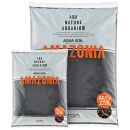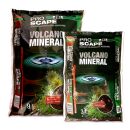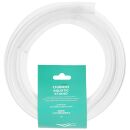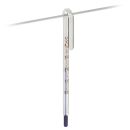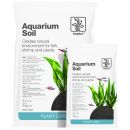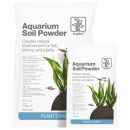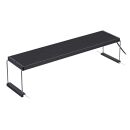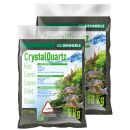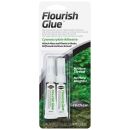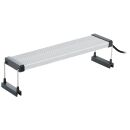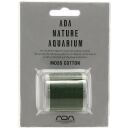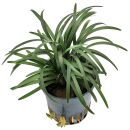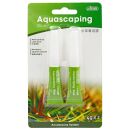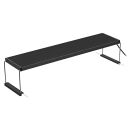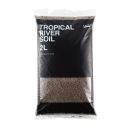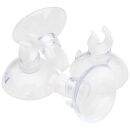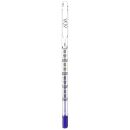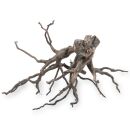Terrascaping - Make something beautiful out of your terrarium!
Terrascaping is the artful interplay of flora, fauna and decorative materials in a terrarium. The aim here is to create a unique piece of nature within your own four walls.
The terrarium is the canvas for creative, nature-inspired arrangements of rock and wood - the so-called hardscape, the floor and plants.
The relatively new term terrascaping emphasises the aesthetic, creative aspect of the terrarium, just like aquascaping in aquaristics. The suffix "scaping" is borrowed from "landscaping", which refers to garden, park and landscape design.
Terraristics is orientated towards the different habitat types and climate zones of the earth, primarily in order to do justice to the animals with their species-specific habitat requirements, but also to plant the containers appropriately and attractively. Therefore, there are different types of terrariums, and it is advisable to adapt terrascaping accordingly - excluding special forms such as the outdoor terrarium or the formicarium (ant terrarium). The styles of terrascaping can also be roughly categorised as aquaterrariums, (rain) forest terrariums and dry terrariums.
The aquaterrarium or paludarium has an aquarium and a terrarium section. A variety of different biotopes can be recreated in paludariums. Variants such as the rivarium or riparium aim to recreate streams or riverbank landscapes as realistically as possible.
For the design, submerged aquatic plants, floating plants, marsh plants and mosses can be combined with terrestrial plants or even tropical climbing plants and epiphytes, such as araceae or bromeliads like tillandsias, neoregelias and vrieseas, to name but a few. The diversity of nature itself means that there are virtually no limits to creative freedom.
The rainforest terrarium has a special charm, with a phenomenal abundance of different plant species and endless combination possibilities. It focuses on the regions of the world with the highest rainfall and no really dry seasons.
Daytime temperatures between around 25 - 32 °C and high humidity of at least 70 to 80 % characterise the habitat of the lowland rainforest around the equator. Tropical mountain rainforests and cloud forests have cooler temperatures depending on the altitude and often appear enchanted due to the lush growth of moss and lichen. Temperate rainforests can look similar to these year-round moist and cool montane tropical forests. These grow in some very humid regions outside the tropics, with warmer and colder seasons.
In addition to diverse climbing plants, the tropical jungle is characterised in particular by epiphytes on the branches and trunks of the trees. These include countless orchids and ferns in all tropical regions and, especially in the South and Central American tropics, many bromeliads. Lithophytes grow on rocks. In colder zones, they are mostly represented by mosses, lichens and algae; in warmer regions, many higher plant species are also found. The same species often grow both on rocks and as epiphytes on trees. Lithophyte species are particularly common in the spray of waterfalls.
Terrestrial plant species in the herb layer of tropical and subtropical rainforests green the undergrowth. Such shade plants often display attractive leaf shapes, colours and patterns, such as silvery spots and stripes or bluish iridescence.
"Forest terrarium" can stand for anything that mediates between rainforest and dry terrarium. Many different semi-humid to semi-dry forest types can be recreated, such as deciduous tropical forests with rainy and dry seasons, semi-humid tropical mountain forests, subtropical humid forests with humid summers and cool, dry winters or evergreen hard-leaved forests with summer drought and cool, humid winters. The forest landscapes of the temperate, cold winter zone can also be a theme, but tropical and subtropical terrascapes are of course easier to realise in heated indoor spaces.
Typically, the temperatures in forest terrariums are between around 20 and 25 °C and the humidity should be between 50 - 70 %. Many orchids, tillandsias and epiphytic cacti particularly benefit from a drier, cooler winter phase and increase their willingness to flower, as they often originate from highlands on the edge of the tropics or from the subtropics. Even in the treetops of tropical rainforests, a dry and sunny microclimate prevails at times despite large amounts of rain, which is why many epiphytes are extremely dry-adapted.
If a terrarium with tropical or subtropical plants is planned, the climatic factors such as light, temperature, humidity and ventilation should be similar to the conditions in their native habitats. However, if terrarium animals are also planned, these parameters should primarily depend on the animal population and be monitored accordingly.
Creativity is required when planting tropical and subtropical forest terrariums. We recommend robust, small plants that are as decorative as possible. Orchids look particularly impressive in combination with small ferns, Ficus, Begonia or some Philodendron species. Root climbers such as Ficus pumila entwine tree trunks and grow upwards on them. Mosses complement the terrarium with their varied appearance and a particularly positive influence on the microclimate.
The dry terrarium focuses on arid and semi-arid regions and can be set up as a desert, semi-desert, steppe or savannah habitat type. Desert terrariums tend to be sparsely planted. Wood and stones form a central feature of this style. Robust and drought-resistant plants are the first choice here, such as the large variety of cacti and other succulents, as well as various bromeliads. Of these, the grey Tillandsia species are particularly recommended. Their densely arranged, larger trichomes make them more drought-tolerant than green tillandsias In our Terrascaping category, creative minds get their money's worth. Here you can not only buy a terrarium, the interplay of diverse and colourful terrarium plants in combination with artfully arranged hardscape opens up completely new dimensions of design.










